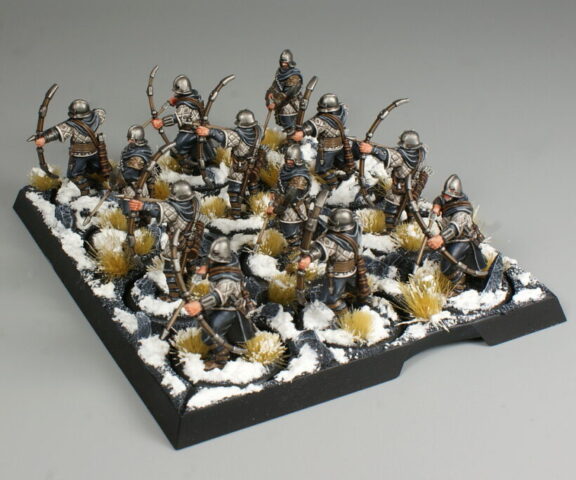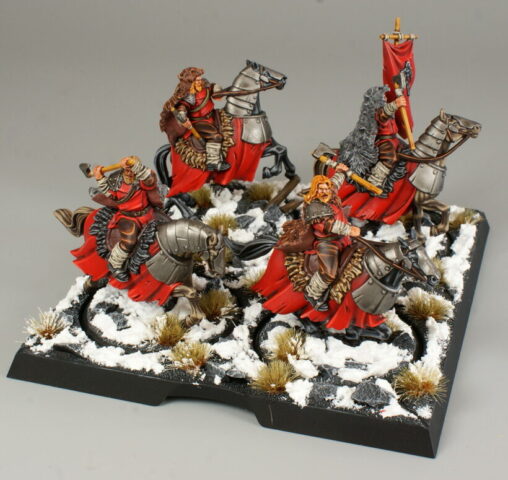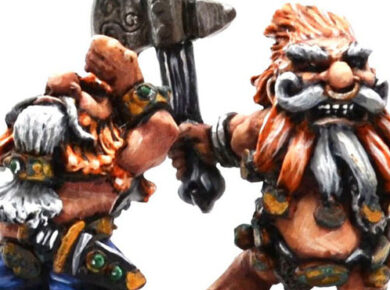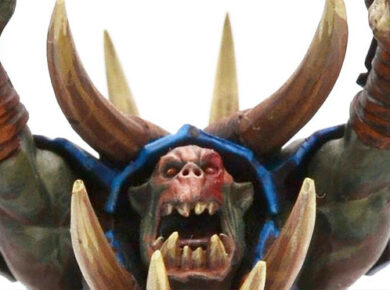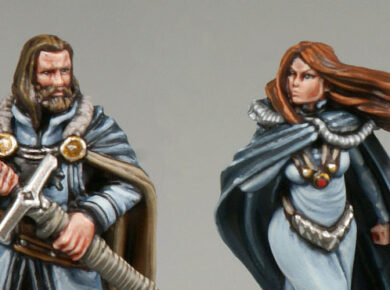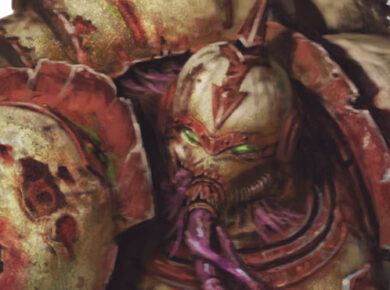Hello everyone and welcome to the ruthless world of Westeros, where the War of the Five Kings rages on!
Season 6 of A Song of Ice & Fire: The Miniatures Game brings a rules overhaul, offering gameplay that is both more strategic and immersive. We have prepared a summary of the rules, similar to what we did for Conquest, but this time in a single article. This effort is also a personal motivation to study the rules and continue building our Stark army, which you may have seen in our first article.
We are well aware that this article may not be of great use to veteran players, but we hope it will serve as a guide for those discovering the game. We keep our fingers crossed that CMON will manage to overcome the recent difficulties. The announcement of new releases planned for 2026 offers a glimmer of hope, especially for those who have pledged the skirmish game in this license. Currently, CMON is going through a difficult financial period, but the game continues. The apps had disappeared from the App Store without explanation, but they have returned. Season 7, scheduled for September, has been postponed. It should clarify some unclear rules, notably the concept of “target,” which is often debated. No releases are planned for 2025, neither new units nor balancing updates. Six new boxes are announced for 2026. The priority remains the release of the Tactics game, expected in early 2026. CMON assures it remains committed and wants to keep the game alive, with the support of its community.
The game takes place during the War of the Five Kings, the bloody struggle for the Iron Throne that pits iconic figures like Robb Stark and Joffrey Baratheon against each other. Each player commands an army made up of combat units, but also non-combat units that act behind the scenes via the Tactical Board.
Course of a Game:
At the start of the game, each army is fully deployed before the game begins, even though the game then proceeds with alternating activations. This places the system somewhere between games like Games Workshop and Conquest.
This choice of full deployment from the start can slow down setup time a bit, but it is quickly balanced by the smooth and strategic pace brought by alternating activations. This creates a good balance between initial planning and real-time adaptation, enhancing the tactical depth of the game.
Each game is organized into several rounds, which are themselves divided into two phases:
- Activation Phase : players take turns activating their units. A unit can perform one action among several options (maneuver, march, attack, charge, retreat). Some abilities or tactic cards grant additional free actions. Generally, you cannot skip your turn if you have available units, which maintains pressure throughout the game.
- Cleanup Phase : tokens and temporary effects are reset, each player draws tactic cards (up to a maximum of 5 in hand), then the first player token passes to the next player for the following round.
The main objective is to accumulate victory points by completing objectives defined by the game mode. These objectives can vary from controlling key zones, eliminating enemy units, or performing specific strategic actions.
Types of Units :
The game distinguishes two main categories:
Combat Units : Infantry (12 miniatures, 3 ranks), Cavalry (4 miniatures, 2 ranks), and Solo units (unique fighters or war machines). Each unit has a card detailing its characteristics: movement, attack, morale, defense…
Non-Combat Units (NCUs) : political figures or strategists who influence the game through the Tactic Board but are never on the battlefield. They provide powerful effects, alter the game’s pace, and enable the activation of special abilities.
Attachments & Line of Sight:
Attachments are characters that strengthen a unit by replacing a miniature in the front rank. Note that only one Attachment is allowed per unit, and they must correspond to the unit type. Line of sight is essential; it determines what your unit can target. Each unit has four arcs of sight (front, flanks, rear), and attacking from a flank or rear often grants significant bonuses.
Main Actions :
Here is the list of the main actions in the game. They are similar to those found in many wargames, so if you’ve played other miniature games, you won’t feel out of place.
Maneuver : reposition your unit, pivot, and advance. Perfect for setting up a charge or avoiding an engagement.
March : a fast straight-line movement, longer than a maneuver but without an initial pivot.
Retreat : leave an engaged combat, with a dice roll to determine the distance. Risky if the unit is surrounded.
Attack : the heart of the game. Melee attack if engaged, or ranged attack if line of sight and range allow.
Charge : a powerful movement with an attack bonus, but beware—failures can be costly!
Combat & Morale :
Attacks are resolved by rolling dice based on remaining ranks. Successful hits remove miniatures, and any losses trigger a panic test. Failure can cause additional wounds and tactical disadvantages.
Tactical bonuses spice up combat. Flank or rear attacks weaken the enemy’s defense and morale, while charges allow dice rerolls.
The Strategy Board and Advanced Rules :
We leave the battlefield to dive into the political backstage, strategy, and subtleties that make each game unique. Mastering the Strategy Board, Non-Combat Units (NCUs), Commanders, and advanced rules is what will make you a true warlord.
The Strategy Board represents political influence, orders given behind the scenes, and maneuvers that impact the battle without the miniatures necessarily moving. It is divided into 5 zones, each with its own effect triggered as soon as an NCU claims it:
The Crown : Intrigues and political pressure
Wealth : Access to the house’s resources
Tactics : New strategic options
Combat : Direct offensive orders
Maneuver : Rapid repositioning on the battlefield
When an NCU is activated, it can take position on an empty zone of the Board and immediately trigger its effect. It remains in control as long as it occupies that zone, which can unlock other abilities or tactical cards. The most interesting strategic choice is to place an NCU purely defensively or tactically—not necessarily to benefit from the zone’s effect, but to deny it to the opponent. For example, blocking the Crown against an army relying heavily on Panic, or Wealth against a faction focused on healing or reinforcements, can significantly hinder enemy plans.
NCUs can also choose to pass their activation, but this is rarely advantageous. Some NCUs can influence a combat unit by applying temporary effects (beneficial or harmful) called influences. A unit can have both an allied influence and an enemy influence simultaneously. These influences are not attachments and are removed at each cleanup phase. Losing abilities does not automatically remove influences, unless otherwise specified.
Commanders and Tactics Deck :
The Commander is a key figure in your army, often represented by a unique attachment marked Commander with a (C) on its cost card. The Commander grants specific abilities to the unit it leads or acts as an NCU and provides 3 exclusive tactic cards that enrich your deck. A major advantage of Commanders is that they do not cost points in army building, making them a significant strategic asset.
Each army has a Tactics Deck of 20 cards, composed of 14 faction cards (7 different, 2 copies each) and 6 Commander cards (3 different, 2 copies each). At the start of the game, you draw 3 cards, then continue to draw cards regularly throughout the game. You draw 1 card at the start of each turn, and certain zones on the Strategy Board or abilities allow you to draw additional cards.
Each Tactic card specifies a precise moment when it can be played, called a trigger (e.g., “After suffering an attack,” “When a unit attacks,” etc.). These triggers define the exact moment the card can be played. Even if you have multiple cards sharing the same trigger, you can only play one at that moment.
To conclude, despite a somewhat uncertain publishing context, A Song of Ice & Fire: The Miniatures Game continues to offer a rich, tactical, and deeply immersive experience for fans of epic battles and political intrigue in the world of Westeros. While the lack of planned releases for 2025 may be concerning, the announcement of new content for 2026, especially the release of the Tactics game, gives hope that the flame will not go out. From what I observe, the community remains active and passionate despite current uncertainties. I hope this overview of the rules has helped clarify things, whether to better understand the game or to dive into the adventure with enthusiasm. On our side, we’re eager to play our very first game: the mechanics seem really well designed, both accessible and strategically rich. As a matter of principle and conviction, we can only recommend this wargame, which clearly deserves a place in every wargamer’s collection.
Don’t missed to support us on PATREON!
Questions, ideas, spelling error or just want to share your thoughts? Leave a comment below! And if you enjoy our work, a little support would help us keep creating more and more content.
See you soon!

